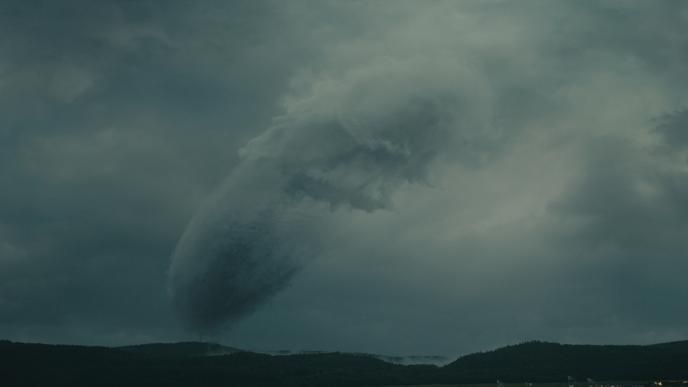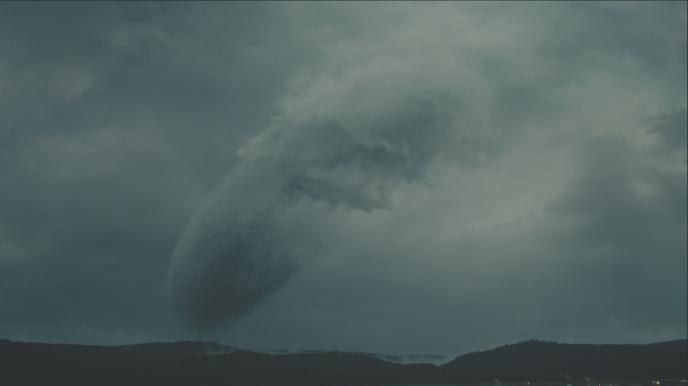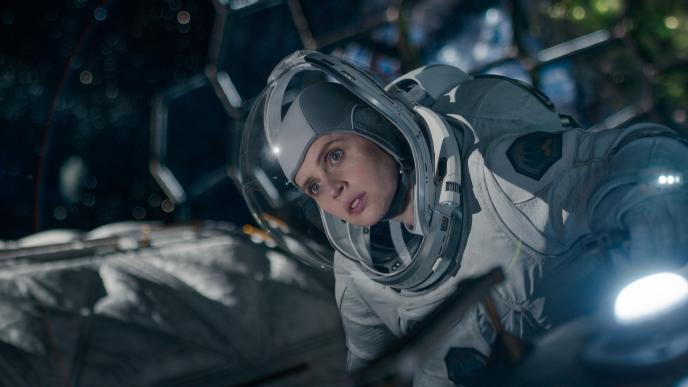
Arrival
Celebrated Canadian director Denis Villeneuve (Sicario, Enemy) tasked Framestore’s Montréal studio with reinventing the grand finale of his latest sci-fi film, Arrival, working on around 10 shots within what was a very tight schedule. Determined to showcase Framestore’s talents in FX, VFX Supervisor Ivan Moran took up the challenge and delivered spellbinding work.
We work in entertainment and I wish every project was like Arrival; entertaining, inspiring and fun.
Linguist expert Dr Banks (Amy Adams) heads to work at the local university when a large mysterious object appears in the sky over Montana, one of 12 across the globe, catapulting the world into a frenzy. These floating ships, smooth-sided orbs 1,490 feet in height, were home to some very mysterious sounds. Banks finds herself integral to the US Army’s investigation into who these visitors are and what their purpose is; attempting to translate and decipher their unusual language and discover the meaning behind their sudden arrival. With the help of her new colleague, theoretical physicist Ian Donnelly (Jeremy Renner), Dr Banks is working against the clock to secure the future of humanity.

The Brief
With a cold and subtle palette, the environments these floating space ships inhabit are typically everyday and without obvious characteristics like the Eiffel Tower or the White House. The intention was to normalise the extraterrestrial narrative by having the visitations occur on an ordinary day beneath overcast skies.
Villeneuve engaged Framestore towards the end of the postproduction process for a very specific task. At all 12 locations around the world, the alien ships (conceived by Oblique FX) rise slowly into the sky and tip onto their sides. One by one, the gigantic craft then disappear from view. Villeneuve briefed the team on how he wanted dematerialisation effect to make the audience feel; uplifted but also melancholic. It also had to compliment the extremely stylish and modern tone of the film.
Working on Arrival was wonderful in every way. Not only did we creatively and technically devise the end sequence at Framestore, but everything about the project was a dream; the clients, pictures and our incredibly talented team.

The Process
Moran immediately saw that he needed to make the shot as long as possible to work with the huge scale of the ship. 'Our biggest challenge was selling the idea of scale. These ships are enormous, over a thousand feet long but devoid of any recognisable external architecture that could assist us with scale,' noted Moran. When testing possible dematerialisation techniques, Moran used the condensation effect often seen surrounding aircraft; intense mirages caused by the different refractive properties of adjacent layers of warm and cold air. The effect produced a shroud of vapor across the vessel, which worked with the distortions which begin to fragment its form. 'The condensation effect is often accompanied by a particular low-temperature complex mirage effect called a '"fata morgana". 'Using that mirage effect allowed our compositors to prevent anything feeling like a straight dissolve because I was able to break up the ships into interesting patterns,' added Moran. The shot ended up stretching to a lengthy 30 seconds, which they disguised by cutting across to different locations.
To develop the layers, the artists generated each element using fluid simulations in Maya, with compositors assembling a selection of 2D smoke elements from Framestore’s asset library. It was key to get the look absolutely right. The team created a leading edge of the condensation effect that was organic and broken up, 'so it didn’t feel like a hard-edged tablecloth being drawn over the ship' adds Moran. That was done as particles that were converted to volumes at render time, because it needed to have a highly complicated spider-web kind of appearance. The new ending featured nine partial disappearance shots, each at a different location, followed by a lingering shot showing the full 30-second dematerialisation of the Montana ship.

As Framestore worked against the clock to refine its simulations, the production editorial team began recutting the ending of the film to make space for it. A great testament to the work that was produced by the Framestore team, and an excellent start to a long-term relationship with Villeneuve as Framestore begin work on his next film, Blade Runner 2049, due for release in Autumn 2017.



